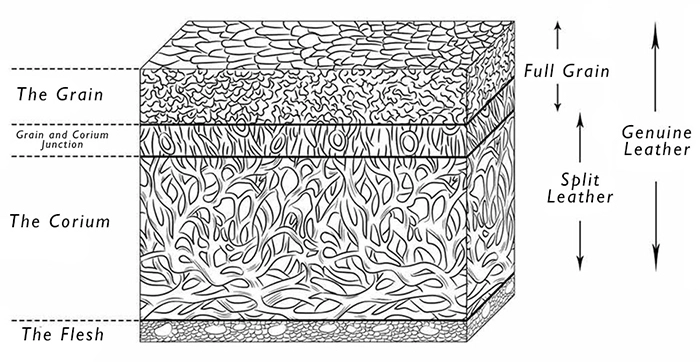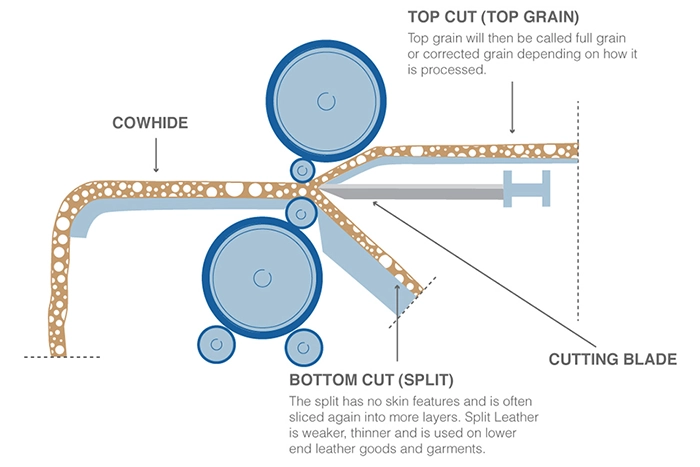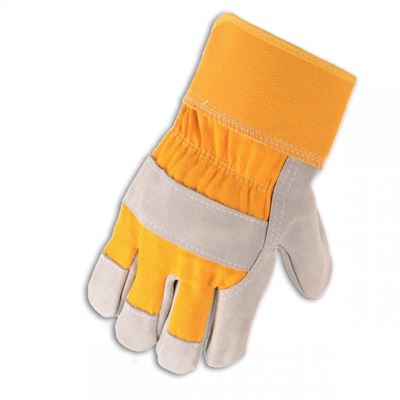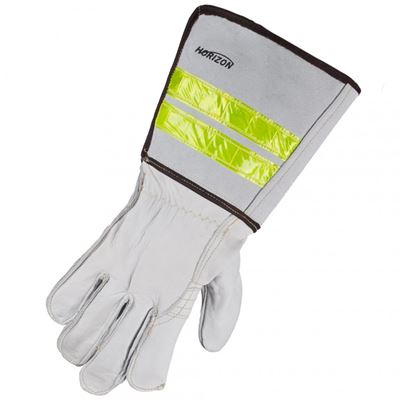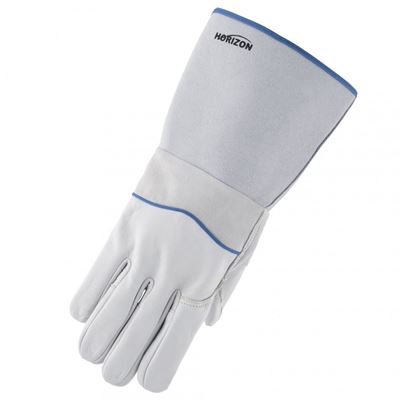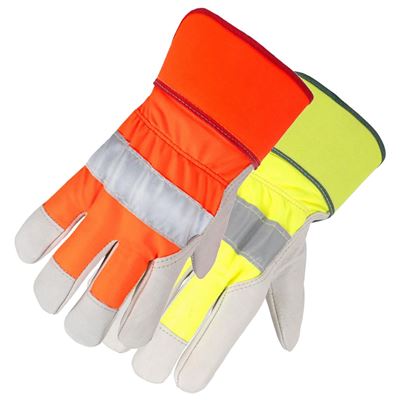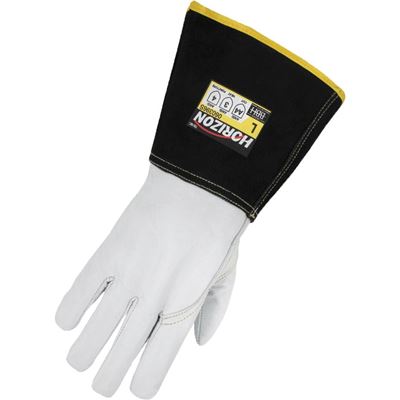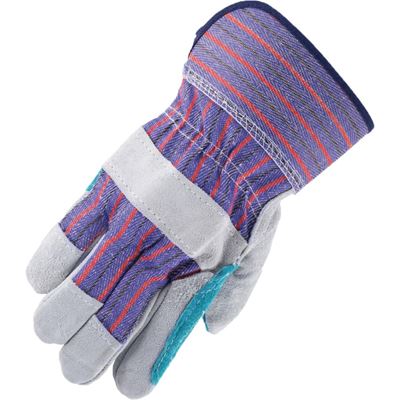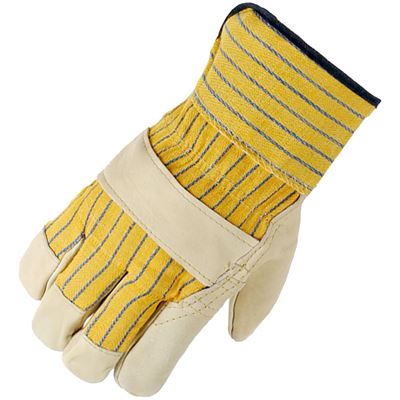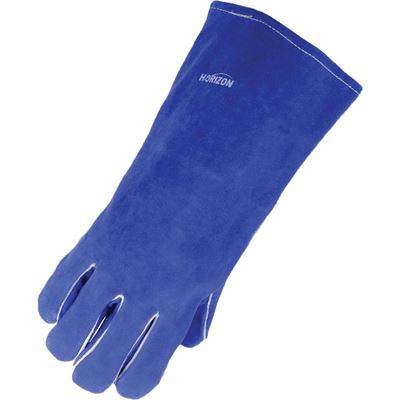Not All Leather Gloves are Made Equal - Feature Friday
Welcome back to Feature Friday, the video and blog series where we discuss the season's relevant safety products, answer frequently asked questions, and discuss industry safety.
This week, we’re navigating the nuances surrounding leather work gloves. Although most leather gloves may seem relatively similar to one another at a glance, there are various factors at play. To better understand the differences between the many kinds of leather gloves, there are 3 main characteristics to consider:
- Types of leather
- Style of glove
- Source of leather
Types of Leather
The term leather is a wide-reaching term. Simply put, it refers to “a material made from the skin of an animal by tanning or a similar process.” When the skin is removed from the animal it consists of 3 notable layers: the corium, junction, and grain.
Together these components in its purest form isare what is referred to as genuine leather. This genuine leather can be further processed into two components: the grain and the split.
The difference between grain and split leather is quite noticeable. The first and most obvious difference is appearance. In comparison, Grain leather has a ‘traditional’ leather look. This typically lends itself to being a more expensive style of glove, but for a reason. Grain leather is typically more supple and conforms to your hand the more you wear it. It provides resistance to water, dirt, and some chemicals depending on the source of the leather.
Split leather is a more rough, fuzzy, and textured look. Because it is from a tougher part of the hide it typically protects better against cuts, abrasion, and punctures. This material is typically less dexterous than its grain counterpart and is not resistant to water and chemicals. Because it is more dense than the split layer, which is usually pressed thin, it offers significantly better insulation in high-heat environments offering better protection.

Styles of Leather Glove - Which are Best for Your Application?
One of the key differences you will see in the leather glove market is the various styles of glove. There are 3 main styles:
Leather Palm with Cotton Back
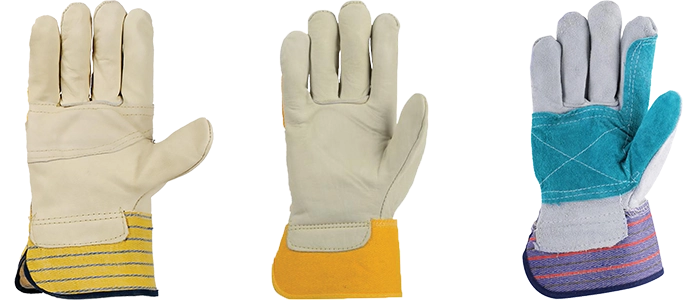
Patch Palm gloves are made of 3 separate pieces of leather: the palm, the fingers, and the patch. By far one of the most affordable options for a leather glove, these are assembled by stitching the three main components together, with the patch being the connecting point. One problem that can arise from this style of glove is the added possibility for the stitching to be exposed to heat and abrasion which could quickly degrade the glove.
1-Piece Palm gloves are made of a single piece of leather, making it more durable than the patch palms. This configuration provides better protection against heat and abrasion.
Double Palm gloves utilize the same design as a 1-piece palm with an additional leather patch on the palm, pointer finger, and thumb. This patch is best utilized when handling wood, cable, or in any application where splinters are possible. The extra patch on a double palm glove keeps you safe from serious injury by providing you with a visual indicator of excessive abrasion to the glove. When you can see the layer below the patch, your gloves have done their job and are ready to be replaced.
Full Leather

Full leather gloves are made of a single piece of grain leather. These gloves often feature a keystone thumb which provides better dexterity when wearing them. The leather in this style of glove is usually pressed very thinly to make them light and pliable. This ensures the glove stays cool in the summer while also providing plenty of space for a liner whenever the temperature goes down.
Welding Gloves
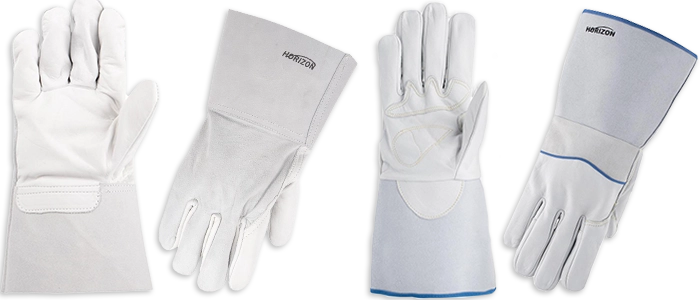
Welding gloves typically feature a grain palm with a split leather back and cuff. The density of the leather in combination with internal liners provide superior protection from heat exposure, contact burns, sharp metals, and other threats from welding. They feature aramid stitching which helps reinforce the glove while ensuring the stitching won’t disintegrate from the heat. Welding gloves are also available in a Metal Inert Gas (MIG) and Tungsten Inert Gas (TIG) formats.
MIG Welding gloves offer greater protection from heat exposure allowing for longer production and continuous welds at the expense of dexterity and precision.
TIG Welding gloves are typically made lighter and more dextrous since this welding method produces less heat and calls for more dexterity when handling the torch and filler rod.
Lineman Gloves
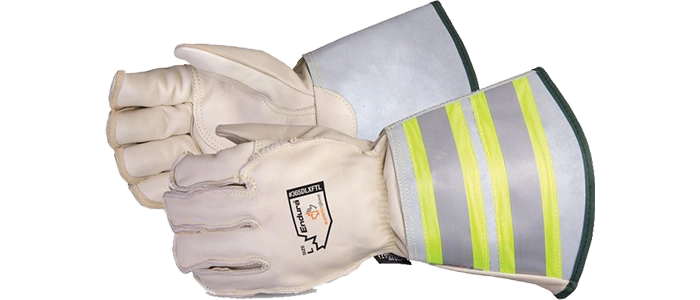
Lineman gloves have a few key features that make them unique. One of the most notable characteristics is the retroreflective cuff that allow linesmen to be visible in poor lighting conditions. The seams on the gloves are also typically stitched using Kevlar® or Aramid threads.
The gloves pictured above in particular are made of 3.5oz horsehide leather. Together with the Kevlar® stitching, these gloves offer a high level of durability to minimize the risk of injury.
Furthermore, lineman gloves often feature reinforced palms which further enhance the durability and protection against abrasion and punctures.
Specialty Leather Gloves
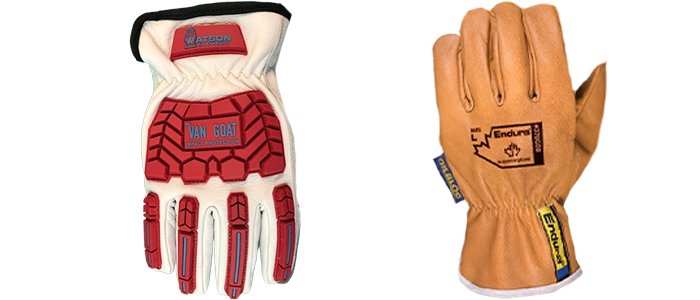
MacMor Industries offers a variety of specialized leather gloves:
Watson Van Goat
The first Feature Friday product we ever discussed, the Watson Van Goat Drivers are a jack of all trades product when it comes to hand protection - it is rated for impact, cut, and puncture protection. With a C 100 lining, users can feel confident that their hands will be protected from cold and wet conditions. For a full in-depth breakdown of the glove, check out Watson Van Goat Gloves - Feature Friday
Superior Glove Endura® Oilbloc™ Drivers
Endura® Oilbloc™ drivers are made of a supple goat-grain leather. The natural high oil content of goat leather in combination with an oil and water repellent treatment helps to protects the leather from these substances while keeping them soft and supple even after wet/dry exposure cycles. The keystone thumb and elasticized back keeps the glove comfortable and easy to wear all day. As for its ratings, the Oilbloc™ drivers offer ASTM ANSI Puncture Level 3 to prevent punctures from stylus size points.
Sources of Leather
- Cow Hide Leather
- Offers protection from heat
- Not overly flexible compared to other leathers (i.e. pigskin, goatskin, deerskin)
- Resistant to abrasion
- Some basic puncture resistance (not safe for hypodermic needles)
- Pig Hide Leather
- Moisture resistant; leather does not stiffen up as much when it gets wet
- Oil resistant
- Soft and supple
- Goat Hide Leather
- Typically lighter weight and a softer texture than most leathers
- Remains pliable after getting wet due to its natural high oil content
- Warm and breathable
- Can be pressed very thin and remain strong; this allows extra room for thicker liners in cooler temperatures
- Buffalo Hide Leather
- By far the most durable of traditional leathers because of its density
- Superior abrasion resistance
- Its porous structure allows for enhanced airflow
- Conforms to the shape of your hand the more you wear them
- Deer Hide Leather
- Soft and durable
- Gets softer with wetting and drying
- Resistant to the cold
- Typically used less today due to more limited availability
- Horse Hide Leather
- Tough and durable while remaining comfortable
- Non-porous and does not breath well
- Dense/thick leather compared to other leathers (i.e. cowskin, pigskin, goatskin)
- Typically used less today due to more limited availability


